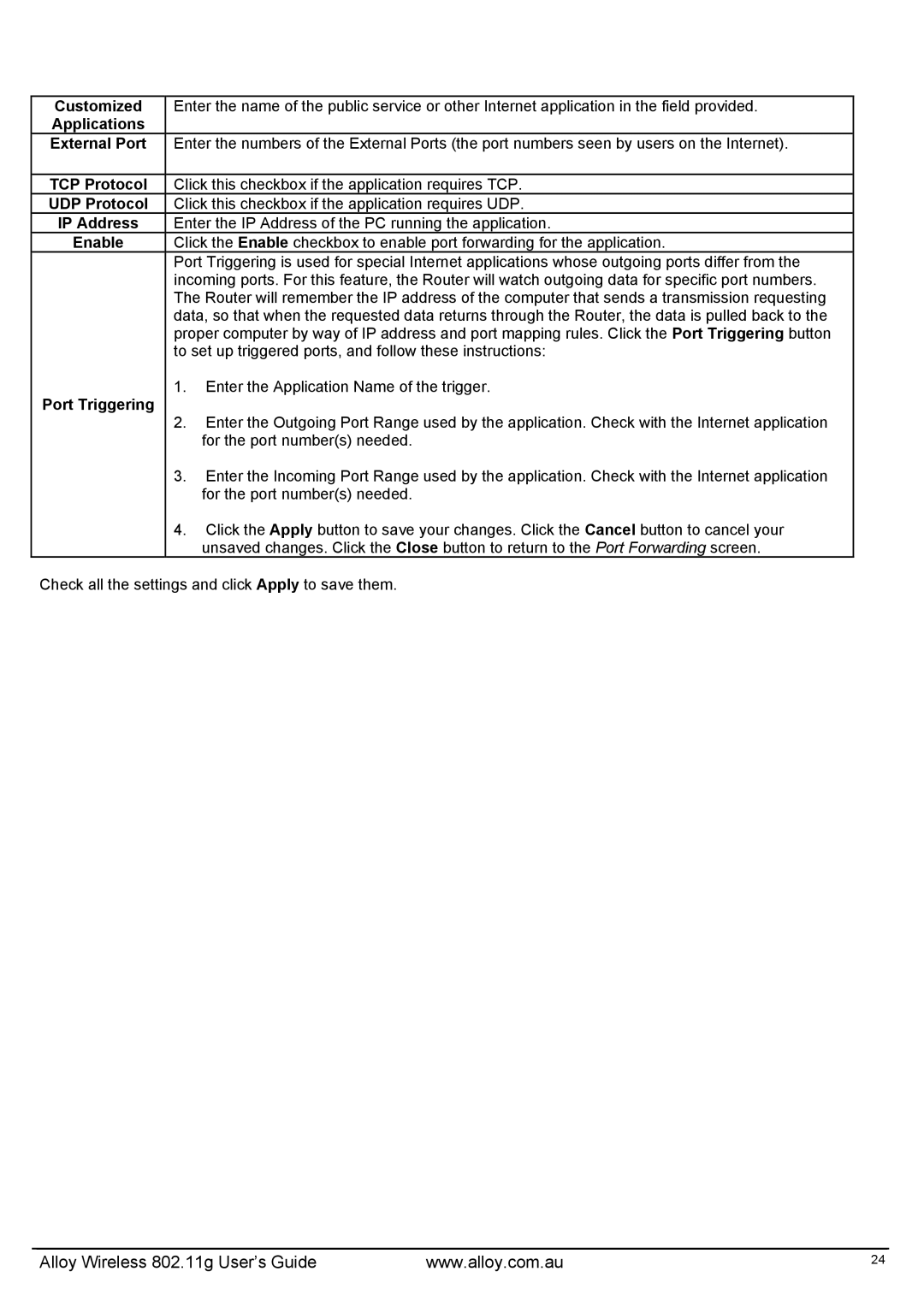Customized | Enter the name of the public service or other Internet application in the field provided. | ||
Applications |
|
| |
External Port | Enter the numbers of the External Ports (the port numbers seen by users on the Internet). | ||
|
| ||
TCP Protocol | Click this checkbox if the application requires TCP. | ||
UDP Protocol | Click this checkbox if the application requires UDP. | ||
IP Address | Enter the IP Address of the PC running the application. | ||
Enable | Click the Enable checkbox to enable port forwarding for the application. | ||
| Port Triggering is used for special Internet applications whose outgoing ports differ from the | ||
| incoming ports. For this feature, the Router will watch outgoing data for specific port numbers. | ||
| The Router will remember the IP address of the computer that sends a transmission requesting | ||
| data, so that when the requested data returns through the Router, the data is pulled back to the | ||
| proper computer by way of IP address and port mapping rules. Click the Port Triggering button | ||
| to set up triggered ports, and follow these instructions: | ||
Port Triggering | 1. | Enter the Application Name of the trigger. | |
2. Enter the Outgoing Port Range used by the application. Check with the Internet application | |||
| |||
|
| for the port number(s) needed. | |
| 3. Enter the Incoming Port Range used by the application. Check with the Internet application | ||
|
| for the port number(s) needed. | |
| 4. | Click the Apply button to save your changes. Click the Cancel button to cancel your | |
|
| unsaved changes. Click the Close button to return to the Port Forwarding screen. | |
Check all the settings and click Apply to save them.
Alloy Wireless 802.11g User’s Guide | www.alloy.com.au | 24 |
